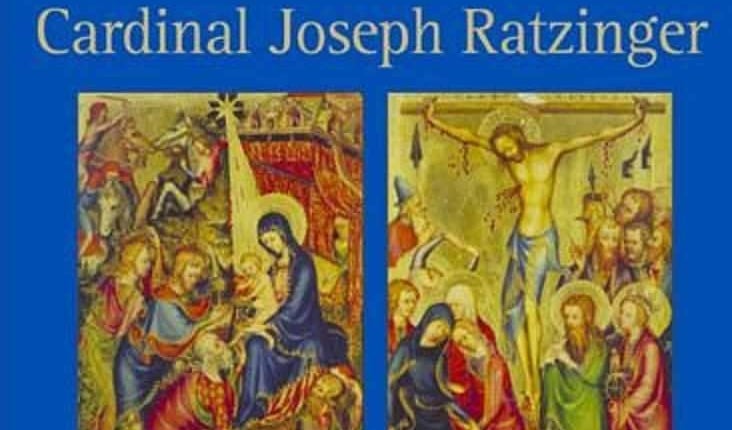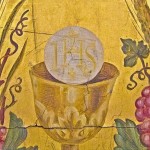
I feel responsible for purifying the minds of my readers from the defiling they experienced at the hands of Michael Novak’s wayward analogy yesterday: the modern corporation as Isaiah’s Suffering Servant (Man of Sorrows).
If you haven’t seen it, dare you look here?
Jody Bottum’s An Anxious Age came to my rescue with a quote from Cardinal Ratzinger’s Introduction to Christianity (by the way, a book banned upon its publication by Cardinal Wyszynski in Warsaw for being too liberal).
I’ve taken the liberty of adding the two paragraphs that precede the one quoted in An Anxious Age. What is said there is profound enough to merit attention and context:
Because of the Lord’s devotion, never more to be revoked, the Church is the institution sanctified by him forever, an institution in which the holiness of the Lord becomes present among men. But it is really and truly the holiness of the Lord that becomes present in it and that chooses again and again as the vessel of its presence – with a paradoxical love – the dirty hands of men. It is holiness that radiates as the holiness of Christ from the midst of the Church’s sin. So to the faithful the paradoxical figure of the Church, in which the divine so often presents itself in such unworthy hands, in which the divine is only ever present in the form of a “nevertheless”, is the sign of the “nevertheless” of the ever greater love shown by God. The existing interplay of God’s loyalty and man’s disloyalty which characterizes the structure of the Church is grace in dramatic form. [. . .] One could actually say that precisely in its paradoxical combination of holiness and unholiness the Church is in fact the shape taken by grace in this world.
Let us go a step further. In the human dream of a perfect world, holiness is always visualized as untouchability by sin and evil, as something unmixed with the latter. [. . .] In contemporary criticism of society and in the actions in which it vents itself, this merciless side always present in human ideals is once again only too evident. That is why the aspect of Christ’s holiness that upset his contemporaries was the complete absence of this condemnatory note – fire did not fall on the unworthy nor were the zealous allowed to pull up the weeds which they saw growing luxuriantly on all sides. On the contrary, this holiness expressed itself precisely as mingling with the sinners whom Jesus drew into his vicinity; as mingling to the point where he himself was made “to be sin” and bore the curse of the law in execution as a criminal – complete community of fate with the lost (cf. 2 Cor. 5.21; Gal. 3.13). He has drawn sin to himself, made it his lot and so revealed what true “holiness” is: not separation but union, not judgment but redeeming love.
Is the Church not simply the continuation of God’s deliberate plunge into human wretchedness; is it not simply the continuation of Jesus’ habit of sitting at table with sinners, of his mingling with the misery of sin to the point where he actually seems to sink under its weight? Is there not revealed in the unholy holiness of the Church, as opposed to man’s expectation of purity, God’s true holiness, which is love, love which does not keep its distance in a sort of aristocratic, untouchable purity but mixes with the dirt of the world, in order thus to overcome it? Can therefore the holiness of the Church be anything else but the mutual support which comes, of course, from the fact that all of us are supported by Christ? [. . .]
Christ the Plunger who is not afraid to get dirty, loving the pedophile priest, the Nazi liturgist, the grumpy pewsitter, and the bonehead bishop? Now there’s an analogy that appeals to me.
Bring it on!
“Unholy holiness” sounds like Rabelaisian Catholicism to me.












